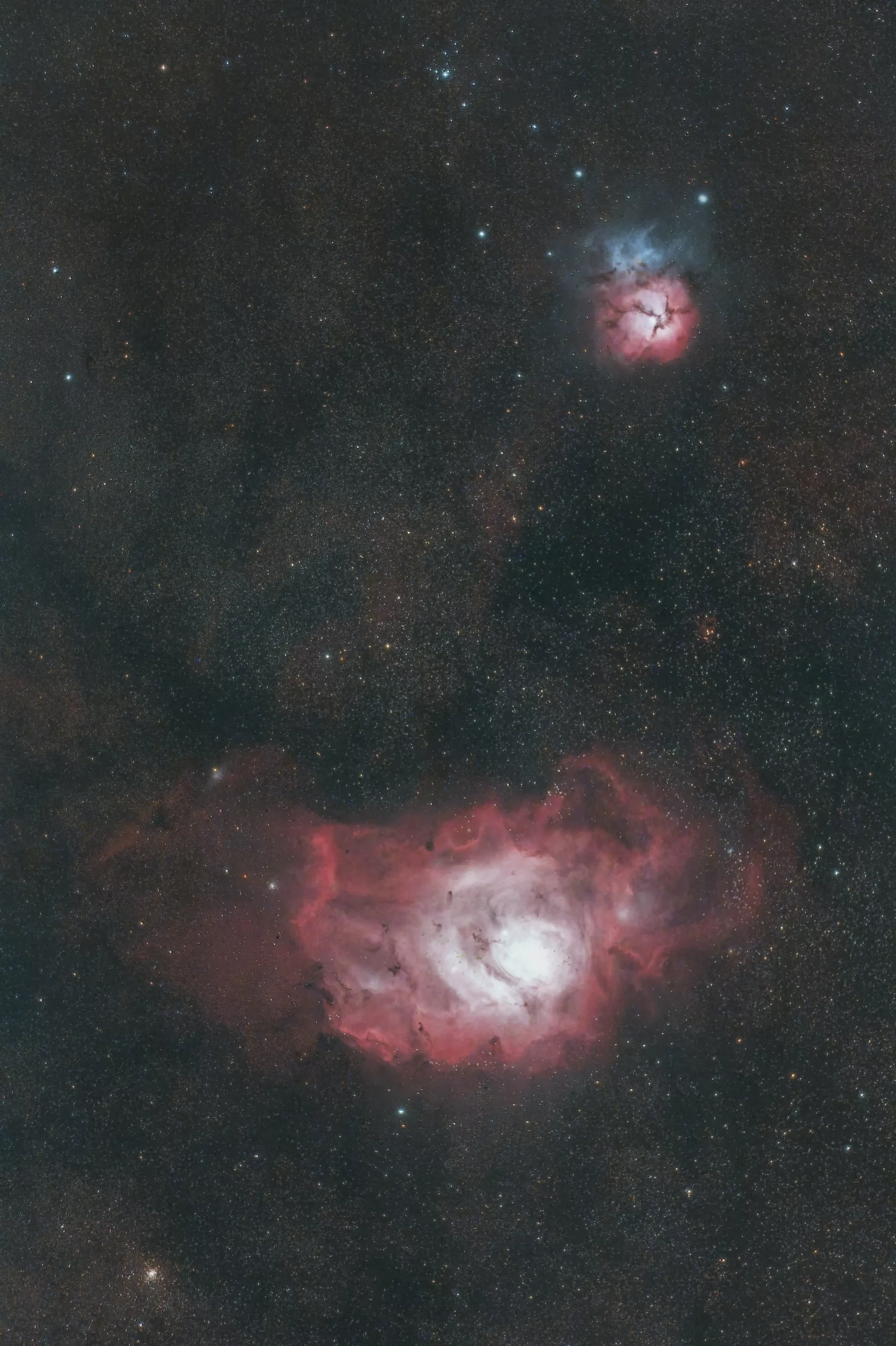Imagine you’re gazing at the stars, with twinkling lights scattered across the vast night sky. Now, imagine enhancing your stargazing experience even further with a Barlow lens. But wait, what exactly is a Barlow lens and how does it enhance observations? In simple terms, a Barlow lens is an optical device that increases the focal length of your telescope, resulting in larger magnification and a closer look at celestial wonders. This ingenious tool holds the power to transform your observations into awe-inspiring journeys, allowing you to witness the enchanting details of distant galaxies, planets, and other celestial objects. So, buckle up and prepare for a cosmic adventure with the magical world of Barlow lenses.
Table of Contents
What is a Barlow Lens?
A Barlow lens is an optical accessory that is used in astronomy to increase the magnification of telescopes. It is essentially a diverging lens that is placed between the telescope’s objective lens or primary mirror and the eyepiece. The Barlow lens works by increasing the focal length of the telescope, which in turn increases the magnification power of any eyepiece being used.
Definition and Function
The primary function of a Barlow lens is to enhance the magnification capabilities of a telescope. By increasing the effective focal length of the telescope, a Barlow lens allows users to achieve higher magnifications without the need for extremely short focal length eyepieces. This makes it a valuable tool for amateur astronomers who want to observe distant celestial objects in greater detail.
Types of Barlow Lens
There are different types of Barlow lenses available, each offering different magnification factors and optical designs. The most common types include 2x, 3x, and 5x Barlow lenses. These numbers represent the magnification factor that a Barlow lens provides. For example, a 2x Barlow lens will double the magnification of the telescope, while a 3x Barlow lens will triple it. It is important to choose a Barlow lens with an appropriate magnification factor based on your specific observation needs.
Benefits of Using a Barlow Lens
A Barlow lens offers several benefits that enhance the overall viewing experience and allow for more detailed observations.
Increased Magnification
One of the key benefits of using a Barlow lens is the increased magnification it provides. By effectively extending the focal length of the telescope, it allows for higher magnification without the need for additional, shorter focal length eyepieces. This is particularly useful for observing distant celestial objects such as planets, moons, and galaxies.
Extended Focal Length
A Barlow lens not only increases the magnification but also extends the effective focal length of the telescope. This extended focal length can be advantageous when observing objects that require a longer focal length to achieve optimal image quality. Additionally, an extended focal length can help in capturing fine details and reducing image distortion.
Improved Image Quality
When used correctly, a Barlow lens can significantly improve the image quality of observed objects. By increasing the effective focal length, it allows for finer details to be resolved and can enhance the overall sharpness and clarity of the image. This is especially noticeable when observing planets or the Moon, where capturing intricate details is crucial.
Versatility
Another advantage of using a Barlow lens is its versatility. Since it can boost the magnification of any eyepiece, you can use a Barlow lens with different eyepieces to achieve a wide range of magnification levels. This versatility allows you to adapt to various observing conditions and tailor your viewing experience based on your preferences and the objects you wish to observe.

Choosing the Right Barlow Lens
When selecting a Barlow lens, there are a few key factors to consider to ensure compatibility and optimal performance.
Compatible Telescope
First and foremost, it is important to choose a Barlow lens that is compatible with your telescope. Check the specifications of your telescope to determine its focal length and aperture size. This information will help you choose a Barlow lens that complements your telescope and maximizes its capabilities.
Magnification Factor
Consider the magnification factor you require for your observations. Different Barlow lenses offer different levels of magnification, so it is essential to choose one that aligns with your needs. It is generally recommended to have a selection of Barlow lenses with varying magnification factors to accommodate different observation scenarios.
Quality and Design
Lastly, consider the overall quality and design of the Barlow lens. Look for lenses constructed with high-quality materials to ensure durability and optimal image transmission. Additionally, consider the optical design of the Barlow lens, as certain designs may introduce additional aberrations that can degrade the image quality. It is worth investing in a reputable brand and reading online reviews to ensure you choose a Barlow lens that provides excellent performance.
Using a Barlow Lens for Observations
A Barlow lens can be a valuable tool for various types of astronomical observations. Here are some examples of how to effectively use a Barlow lens for different observations:
Planetary Observations
When observing planets, using a Barlow lens can enhance the level of detail you can see. It allows you to magnify the planet and its features, such as cloud bands, atmospheric conditions, and surface details. By increasing the magnification, you can better appreciate the intricate characteristics of planets like Jupiter, Saturn, and Mars.
Lunar Observations
The Moon is a favorite target for many amateur astronomers, and a Barlow lens can take your lunar observations to the next level. By increasing the magnification, you can explore the Moon’s surface in more detail. Barlow lenses can help reveal the delicate features of lunar craters, mountain ranges, and other lunar formations that may not be easily visible at lower magnifications.
Stargazing and Deep-Sky Objects
While a Barlow lens is commonly associated with planetary and lunar observations, it can also be useful for viewing deep-sky objects such as galaxies, nebulae, and star clusters. By increasing the magnification, you can bring some of these faint celestial objects closer, allowing you to observe more intricate details and appreciate their beauty.

Barlow Lens vs. Eyepiece
While both Barlow lenses and eyepieces contribute to the overall viewing experience, they serve different purposes and can complement each other.
Comparison of Function
A Barlow lens primarily increases the magnification of a telescope by extending its effective focal length. On the other hand, an eyepiece determines the actual magnification you observe by utilizing the telescope’s focal length in combination with its own focal length. Therefore, a Barlow lens is used to achieve higher magnification, whereas an eyepiece determines the level of magnification within the range allowed by the telescope and Barlow lens combination.
Complementary Use
Barlow lenses and eyepieces work together to provide a wider range of magnification options. By using different eyepieces with a Barlow lens, you can achieve various magnifications without needing a vast collection of eyepieces. This combination allows for flexibility in observing different objects under varying atmospheric conditions.
Tips for Using a Barlow Lens
To make the most of your Barlow lens and ensure optimal viewing conditions, consider the following tips:
Aligning the Lens Properly
Ensure that the Barlow lens is correctly aligned with the telescope’s optical path. This will prevent any image distortion or aberrations caused by misalignment. Carefully center the eyepiece within the Barlow lens to maintain alignment during observations.
Adjusting Eye Relief
When using a Barlow lens, you may need to adjust the eye relief distance. Eye relief refers to the optimal distance between your eye and the eyepiece for comfortable viewing. Experiment with different eye relief distances to find the best balance between comfort and image quality.
Considering Atmospheric Conditions
Keep in mind that atmospheric conditions can impact the quality of your observations. Factors such as turbulence, light pollution, and unstable air can affect image sharpness and clarity. Choose observing nights with clear skies and minimal atmospheric disturbances for the best results.

Conclusion
A Barlow lens is a valuable tool for any amateur astronomer looking to enhance their viewing experience. With increased magnification, extended focal length, improved image quality, and versatility, a Barlow lens opens up new possibilities for observing celestial objects in greater detail. By choosing the right Barlow lens, aligning it properly, and considering atmospheric conditions, you can unlock the full potential of your telescope and capture breathtaking views of the universe. So, why not add a Barlow lens to your astronomy toolkit and take your observations to new heights? Happy stargazing!
